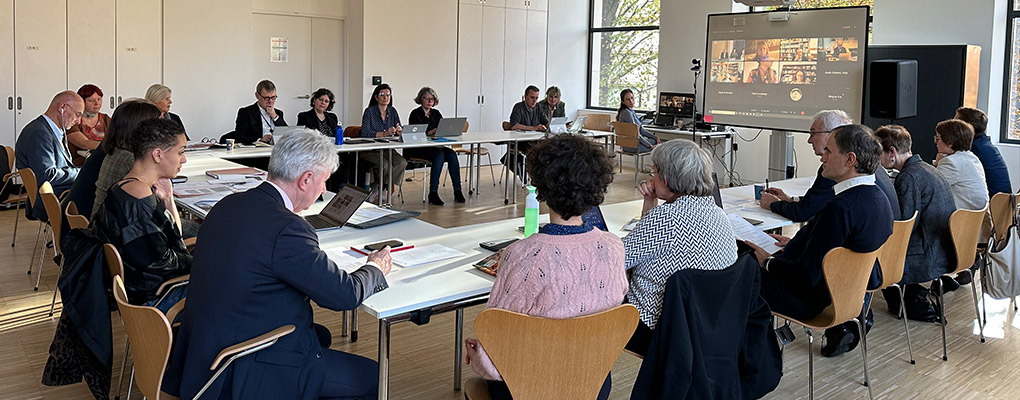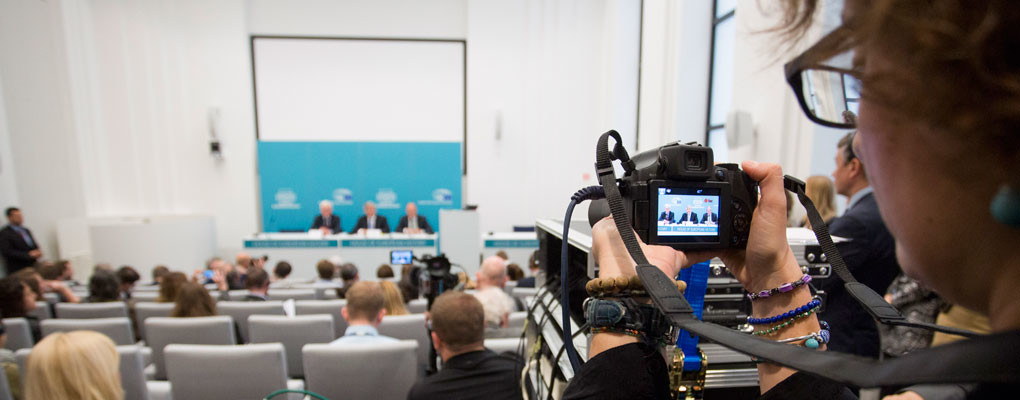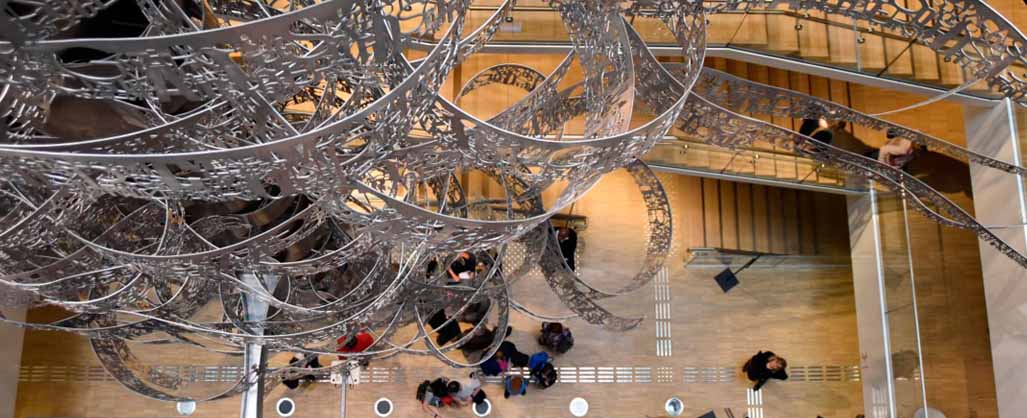Our story
The museum offers a unique perspective on the history of the continent. It takes a transnational approach to the main events and phenomena that have united and divided Europeans through time and the diverse legacies and interpretations of its history. While learning about Europe’s past, visitors are encouraged to think critically about its present in order to engage in its future.
The House of European History was initially proposed in 2008 by then President of the European Parliament Hans-Gert Pöttering. The justification for the project was clear: the generation of people who experienced the tragedies of the 20th century and went on to build the European Union was disappearing. The achievements of European Integration were increasingly being called into question, and the history of European integration was not yet explained in any museum.
Thus, the museum was to be a place for the ‘European idea’ to grow, and to enhance understanding of European history in all its complexity, to encourage the exchange of ideas and to question assumptions. The exhibitions would show the common values of European unification: human dignity, freedom, democracy, the rule of law. In other words, it would demonstrate what Europeans can achieve when working together, overcoming social, economic and political upheavals on a path towards peaceful coexistence.
To realise this, a multidisciplinary team of curators, educators and museologists was assembled in 2011, along with two consulting bodies, an Academic Committee and Board of Trustees, with funding provided by the European Parliament and European Commission. The team’s concept was to show the events of Europe through a Pan-European lens, taking a ‘helicopter view’ of the continent, rather than a sum of national histories. The content was selected based only on processes which were originally European, spread to several European countries, and are still relevant today. Significantly, the team was to take an impartial, academically independent view of European history, using a range of sources, voices and narratives, and ensure the museum could be experienced in 24 European languages – no small feat! The selected venue was a former children’s dental clinic in Brussels, Belgium, the building first financed by inventor of the Kodak camera and philanthropist George Eastman.
The Permanent exhibition started with the origins and formation of the continent, moving to the 19th century political and economic transformations, the havoc of the World Wars, then the rebuilding and integration process of the last half century. The idea of ‘memory’ runs through the exhibition: which historical experiences bind the various nations in European history? Should people remember tragic events to avoid a repetition, or are they bound to forget in order to be able to live on? The idea was that shared historical events have often led to different experiences and different ways of remembering the same historical process.
The Permanent exhibition was brought to life with over 1500 objects, documents and audio-visual materials, from over 300 museums and collections from across Europe and the world. Each of these objects is a piece of European history, a splinter or a symbol of our collective memory, of the compromise of many Europeans before us. These artefacts and their backstories allow us to reflect on who we are today. The museum opened on ‘Europe Day’ – 9 May 2017.
The building
The House of European History is located in the Eastman building, Park Leopold – at the heart of the European quarter in Brussels. The 25 acre park was opened to the public in 1880 on the grounds of the former Royal Zoological Garden.
The Eastman building was financed by a donation in 1931 from the US-business man and philanthropist George Eastman, the inventor of the Kodak camera, to host a dental clinic for disadvantaged children. Construction took place in 1934-35 by the Swiss architect Michel Polak. The building has now been acquired by the European Parliament in 2008 through a long-term lease of 99 years.
The original waiting area of the Eastman building was designed with its young audience in mind, through placing colourful paintings of animals from the fables of French author Jean de La Fontaine. The paintings were lovingly restored during the renovation process and are on display for all visitors to see.
Eastman Building: A Brussels architectural gem for the House of European History
English (457.47 KB - PDF)Das Eastman-Gebäude: ein Juwel des der Europäischen Geschichte
Deutsch (551.15 KB - PDF)Le bâtiment Eastman: un joyau du patrimoine bruxellois pour la Maison de l'Histoire européenne
français (575.11 KB - PDF)Het Eastmangebouw: een Brusselse erfgoedparel verleent onderdak aan het Huis van de Europese geschiedenis
Nederlands (433.28 KB - PDF)Governance
A Board of Trustees and an Academic Committee respectively supervise and advise on the project. The museum is led by Museum Director Dr. Constanze Itzel.
The Board of Trustees: Supervises and takes decisions on fundamental matters relating to the museum. It is chaired by former President of the European Parliament Dr. Hans-Gert Pöttering.
The Academic Committee: Chaired by historian Prof. Dr. Oliver Rathkolb and made up of university professors and experts from internationally renowned museums, it advises the House of European History Academic Project Team on all historical and museological issues.
Mission statement
Our mission is to feed curiosity and enhance the understanding of a shared European history. We offer diverse interpretations that not only consider the facts, but also the stories and human experiences behind them. We encourage our audience and partners to be an active part of building our vision through the collection of historical sources, confronting of memories, and collaborating and engaging with others. We want our visitors to question assumptions and exchange ideas about the past, to act today and shape tomorrow. We keep our mission at the heart of everything we do.

Organisation

Press

